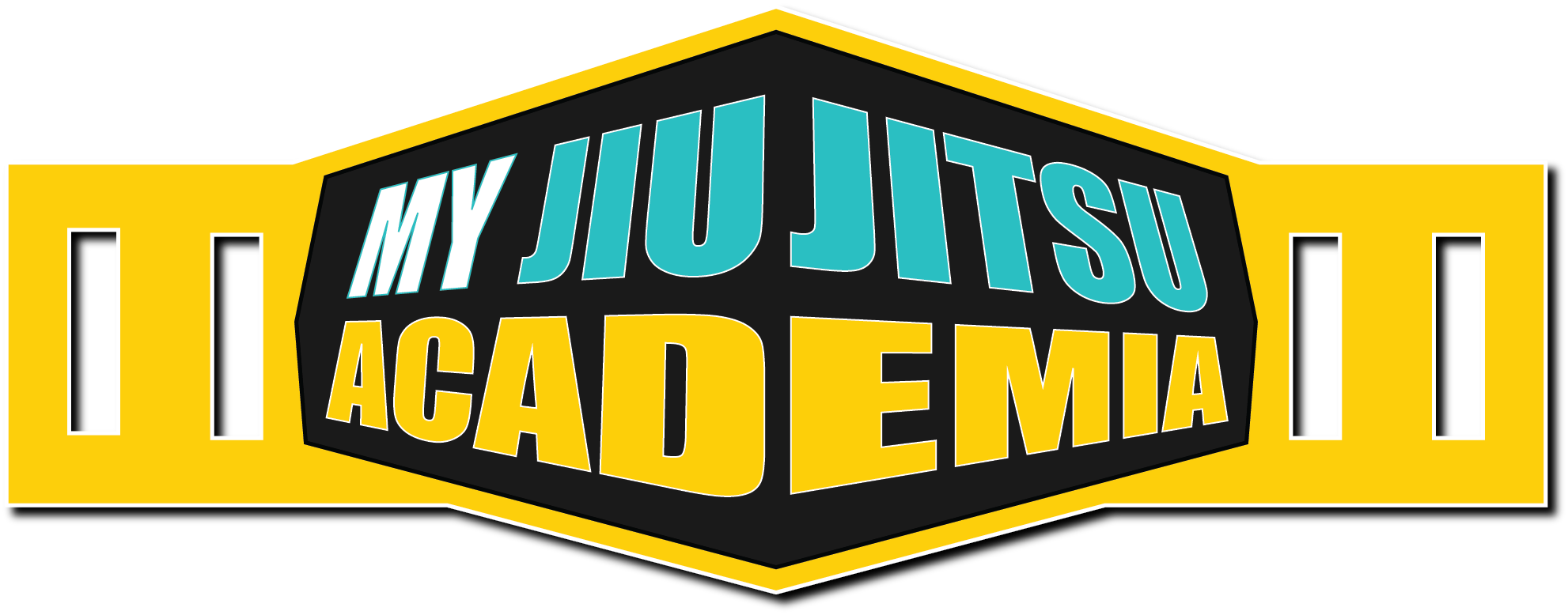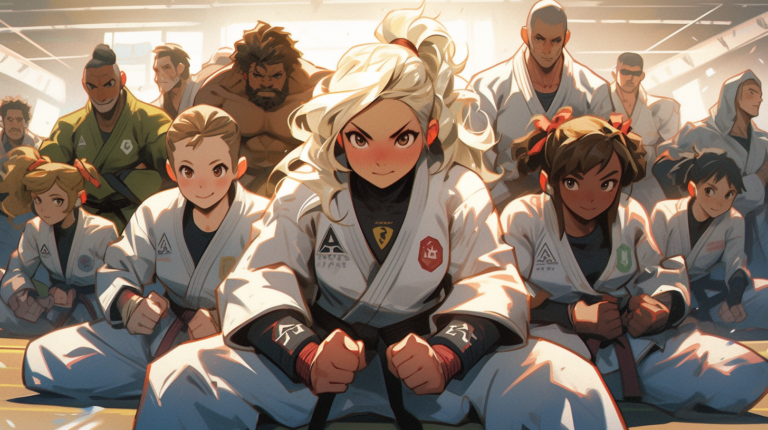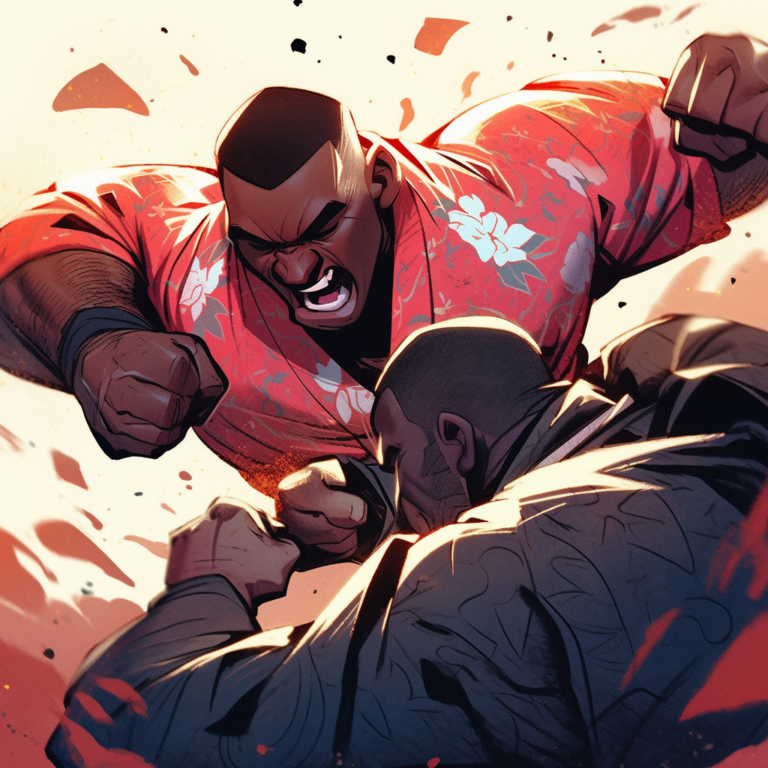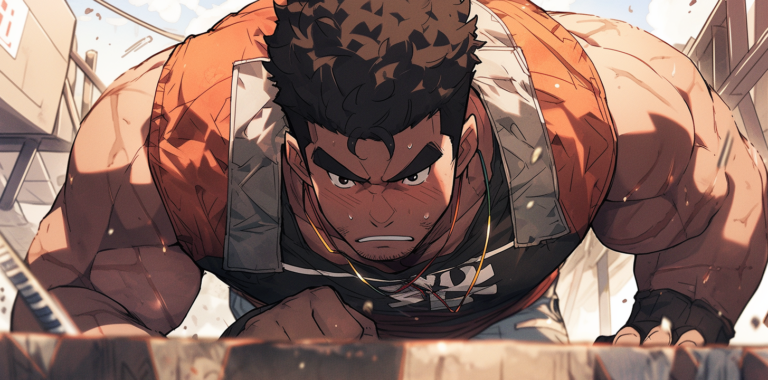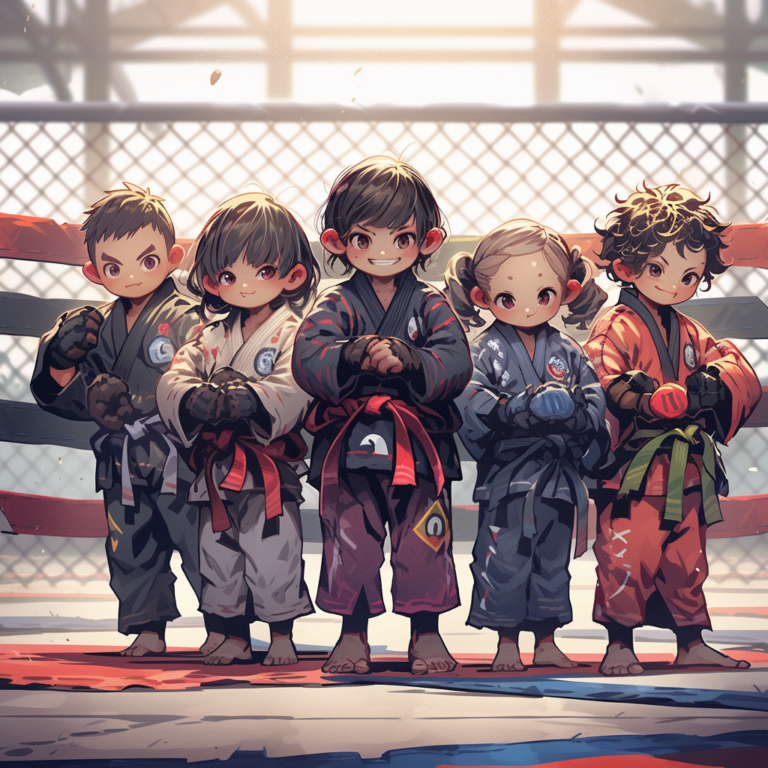is wrestling better than bjj?
The Differences Between Brazilian Jiu-Jitsu and Wrestling
When comparing Brazilian Jiu-Jitsu (BJJ) and Wrestling, it becomes apparent that several key differences set them apart. We will take a closer look at the disparities in grappling and ground fighting approaches, objectives (submission versus pinning), sparring styles and techniques, as well as clothing/gear and scoring systems. Additionally, we will explore the distinct belt systems and variations that exist within these two disciplines. Let’s uncover the unique elements that make BJJ and Wrestling stand out in the world of combat sports.
Key Takeaway:
- Wrestling and Brazilian Jiu-Jitsu (BJJ) have different focuses, with wrestling emphasizing takedowns and pins, while BJJ focuses on ground fighting and submissions.
- Both wrestling and BJJ have unique advantages, with wrestling excelling in intensity, explosiveness, and conditioning, while BJJ thrives in technical aspects, leverage, and control.
- Combining wrestling and BJJ can bring benefits in various aspects, such as learning takedowns and conditioning in BJJ, and utilizing the strengths of both arts in MMA.
is wrestling better than bjj? They Both Focus on grappling and ground fighting
Grappling and ground fighting are the main focuses of both Brazilian Jiu-Jitsu (BJJ) and wrestling. In BJJ, practitioners learn how to fight in close-range combat and use various grappling techniques to gain control over their opponents. They prioritize controlling positions on the ground and looking for submissions to make their opponents submit. On the other hand, wrestling also teaches grappling and ground fighting but with a different goal. Wrestlers try to pin their opponents on the mat, relying on strength, technique, and strategy to gain control and win.
Though similar, BJJ and wrestling have distinct objectives. BJJ practitioners focus on gaining control through leverage and technical skill. Wrestlers aim to take down and pin their opponents’ shoulders to the mat for a set period of time. Both sports also require constant motion, positioning, and strategic decision-making.
Moreover, both sports have specific clothing requirements. BJJ requires a gi (a traditional uniform), which allows for various grips and techniques during grappling. Wrestlers usually wear singlets or tight apparel that allows for movement but minimizes gripping opportunities.
Additionally, each sport has its own scoring system. BJJ competitions award points based on dominant positions achieved and successful submissions. Wrestling utilizes takedowns, escapes from disadvantageous positions, and exposing an opponent’s back to the mat to score. Both systems are made to evaluate a competitor’s success in grappling and ground fighting.
In conclusion, grappling and ground fighting are key elements in both BJJ and wrestling. While BJJ emphasizes control, submissions, and leverage, wrestling focuses on takedowns and pins. Close-range combat, physical conditioning, and strategic decision-making are all needed for success in both sports. Practitioners benefit from developing proficiency in these areas to succeed on the mat or in self-defense situations.
Objectives: submission vs pinning
Brazilian Jiu-Jitsu and Wrestling have different objectives. Submissions are the focus of Brazilian Jiu-Jitsu, while wrestling is about pinning opponents to the ground. In BJJ, you use grappling techniques to gain control and force them into submission via joint locks or chokes. Wrestling’s goal is to immobilize the opponent’s shoulders on the ground for a set period of time.
Both disciplines have common elements like grappling and ground fighting. BJJ emphasizes leverage, technique, and control to combat size and strength differences. This lets practitioners overcome bigger opponents, rather than relying on strength.
Before choosing between BJJ and wrestling, consider the benefits each one offers. Wrestling excels in standing moves and takedowns, and BJJ is great for controlling opponents and using submissions. Consider your goals and preferences before deciding which martial art is best for you.
Sparring styles and techniques
BJJ and Wrestling have distinct sparring techniques. In BJJ, sparring is on the ground. The aim is to gain control with various grips, holds, and position changes. Sweeps, guard passes, and chokes/locks are used. Wrestlers focus on standing-based sparring, with takedowns and maintaining dominance. They use single-leg takedowns, double-leg takedowns, and throws. Each discipline has moves to defend and attack.
BJJ practitioners wear a gi for grip and wrestlers wear singlets or shorts. Scoring is different too, with BJJ awarding points and wrestling points based on takedowns, escapes, and control. Also, BJJ has a belt system to signify level of skill, but not wrestling. From gi’s to singlets, the fashion choices show the unique sparring of each.
Clothing/gear and scoring systems
When it comes to BJJ tournaments, points are given out for techniques like sweeps, passes and maintaining positional control. This contributes to the overall score in a match. Even if a submission attempt doesn’t result in a tap out, advantage points will still be awarded. Wrestling, on the other hand, will award points for takedowns, escapes from holds and exposing an opponent’s back to the mat.
In terms of clothing/gear, BJJ requires a gi (jacket and pants). Whereas, wrestling requires singlets.
Scoring systems differ as well. In BJJ, submissions are key. Whereas, in wrestling pinning opponents’ shoulders to the mat earns points.
Although there are differences, these two arts prioritize grappling skills and techniques, either on the ground or standing positions. Ultimately, the decision of which discipline to pursue is down to personal preference and individual goals.
It’s interesting to note that both BJJ and wrestling have their roots in ancient forms of combat practiced by various cultures throughout the world.
Belt systems and variations
- Belt systems in Brazilian Jiu-Jitsu (BJJ) and wrestling are momentous in showing a practitioner’s proficiency and know-how.
- Both martial arts have their own specific belt systems and changes that stand for advancement and realization inside the particular disciplines.
- For BJJ, belts consist of varying colors from white to black, with various intermediate ranks in between. The color progression symbolizes the growth and control of techniques, with higher belts representing more capability. BJJ also integrates stripes on belts to distinguish talent levels within each rank.
- In contrast, wrestling doesn’t often follow a traditional belt system like BJJ. Instead, wrestlers may wear different singlets or uniforms to symbolize their experience and level. Some wrestling organizations may use medal accomplishments or signs on uniforms to mark accomplishments.
- It’s essential to note that while both BJJ and wrestling have their own particular ways of recognizing skill levels, the key aim for practitioners in both arts is sustained growth and dedication to perfecting their abilities.
The belt systems in BJJ and wrestling give practitioners a concrete demonstration of their growth and mastery within these martial arts. They are a constant indication of the commitment needed to excel in the particular techniques and principles connected with each discipline.
In short, while BJJ has a more structured belt system with color development and intermediate ranks, wrestling employs alternative means such as singlets or uniform indications to represent experience amounts. Regardless of the recognition method used, both martial arts accentuate the importance of continual improvement and dedication in gaining skills.
Benefits and Strengths of Wrestling
Discover the undeniable benefits and strengths of wrestling as we delve into its intense and explosive nature, emphasis on takedowns and pins, and advantage in standing moves. Unveil the stamina and physical strength that wrestling cultivates, and explore its track record of success in the world of MMA and cage fighting. Prepare to be amazed by the incredible advantages that wrestling brings to the table.
Intensity, explosiveness, and conditioning
Intensity, explosiveness, and conditioning are key aspects in both wrestling and BJJ. To achieve success in either discipline, practitioners must be able to maintain a high level of intensity.
In wrestling, drills focus on repetitive explosive movements. This builds muscle memory and enhances explosiveness. While in BJJ, timing, leverage, and technique accuracy take precedence. To optimize their performance, BJJ practitioners prioritize conditioning by incorporating drills specific to the sport, such as positional sparring, rolling sessions, and cardiovascular workouts.
To maximize the benefits of intensity, explosiveness, and conditioning, individuals must combine the training approaches of these two martial arts disciplines. This way, they can develop a well-rounded skillset that complements their goals and aspirations in combat sports or self-defense situations.
Focus on takedowns and pins
Takedowns and pins are essential to both wrestling and Brazilian Jiu-Jitsu (BJJ). Even though both sports emphasize grappling and ground fighting, their objectives differ when it comes to takedowns and pins.
Wrestling wants to score points by taking down an opponent and pinning them down. BJJ, however, uses takedowns to move into positions where they can submit their opponents.
Wrestling needs technique, agility, timing, and strength to execute takedowns and pins efficiently. BJJ, on the other hand, uses takedowns as part of a strategy to gain control and eventually submit their opponents through joint locks or chokes. In BJJ, takedowns are means to an end, not the end itself. Also, while wrestling takes place from a standing position, BJJ usually happens from the ground, using techniques like sweeps and guard passes to gain dominance.
Both sports recognize the importance of takedowns and pins; however, they have different objectives – wrestling intends to score points and pin opponents, while BJJ uses takedowns to gain submission positions. Knowing these variations helps individuals decide which art suits their goals and preferences best.
Advantage in standing moves and takedowns
Wrestling stands out when it comes to standing moves and takedowns! It centers on the methods and strategies used to take opponents to the floor, to gain control and positioning. This advantage is seen in many areas of the sport, as the facts show.
- Wrestling focuses on fast and explosive movements, allowing wrestlers to go to their opponents quickly.
- Having a concentration on takedowns and pins, wrestlers build a strong power to do techniques that take their adversaries down.
- Standing moves, like throws and trips, are vital in wrestling. Wrestlers are taught to use these moves thoughtfully to get good positions during a match.
- The conditioning needed for wrestling also helps its advantage in standing moves. The strength and stamina achieved through training let wrestlers perform powerful takedowns.
- Wrestling’s success in MMA and cage fighting highlights even more its advantage in standing moves and takedowns. Being able to manage an opponent from a standing position is important in these combat sports.
It is essential to remember that while wrestling is great in standing moves and takedowns, Brazilian Jiu-Jitsu (BJJ) has its own advantages. BJJ focuses more on ground fighting techniques, submissions, and overall control. Despite their contrasts, both martial arts can go well together, which will be discussed further.
One interesting thing about wrestling’s advantage in standing moves and takedowns is its historical importance. Wrestling has been done for centuries as a major martial art form in many cultures around the world. Its roots go back to old civilizations where it was used as a way of self-defense or getting ready for battle. Through history, distinct grappling styles have come out with their own variations of standing moves and takedown techniques.
By understanding the benefit wrestling has in standing moves and takedowns, people can make informed decisions about their martial arts journey. Whether it is to increase physical fitness, pursue a professional career, or simply get self-defense skills, analyzing one’s goals and circumstances is significant in making the correct decision.
Stamina and physical strength
In wrestling and BJJ, stamina and physical strength are essential. These sports require high levels of endurance and power.
For wrestling, stamina is critical. It allows wrestlers to handle the fast-paced fumbles and pins. Also, physical strength gives them the ability to execute powerful takedowns, and counter their opponents’ moves.
Likewise, in BJJ, stamina is necessary. It keeps practitioners going for long matches and gives them the strength to execute techniques well. Physical strength is very important too. It helps with precision and power when executing techniques.
To boost stamina and physical strength, training exercises must be incorporated. This includes cardio conditioning, plyometrics, weightlifting, and functional movements. Working with experienced coaches or trainers is recommended to create a personalised programme.
By focusing on stamina and physical strength, wrestlers and BJJ practitioners can enhance performance and achieve success in their sports.
Success in MMA and cage fighting
MMA and cage fighting have seen great successes with Brazilian Jiu-Jitsu (BJJ) and wrestling. Here are the reasons why:
- Strategies and techniques: BJJ focuses on grappling and ground fighting. Wrestling emphasizes takedowns and pins. This gives fighters various options for MMA and cage fighting.
- Control opponents: Both BJJ and wrestling offer control. BJJ has joint locks and chokes. Wrestlers have powerful holds and positioning.
- Adaptability: BJJ and wrestling are versatile for MMA and cage fighting. Whether standing or on the ground, both disciplines provide the tools to face different scenarios.
Success in MMA and cage fighting isn’t just about BJJ or wrestling. Other factors like striking, conditioning, fight IQ, mental strength and athleticism are also important. Aspiring fighters should develop a skill set that includes aspects of both.
Integrating BJJ and wrestling into your fighting style gives you an edge. Leverage their strengths and practice any weaknesses. This will unlock your full potential and maximize your chances of success inside the octagon or cage.
Don’t miss out – master these disciplines now. Elevate your game and reap the benefits of MMA and cage fighting.
Advantages and Skills of Brazilian Jiu-Jitsu
Brazilian Jiu-Jitsu (BJJ) offers a range of advantages and skills that make it a highly effective martial art. In this section, we will explore the technical aspects and leverage that set BJJ apart, the importance of control and self-defense techniques, as well as the ability to neutralize size and strength differences. Additionally, we’ll discuss how BJJ can lead to success in grappling sports events and real-world self-defense scenarios. Get ready to uncover the power and versatility of Brazilian Jiu-Jitsu.
Technical aspects and leverage
In BJJ, it’s essential to consider techniques for ground fighting. Locks, holds, chokes and joint manipulation are used to control an opponent and get submissions. Executing these correctly and understanding leverage is key to neutralizing strength advantages.
BJJ practitioners also study positions strategically, looking for advantageous techniques based on body mechanics and positioning. Leverage is vital when transitioning, controlling or escaping from tricky situations.
Wrestling and BJJ share some grappling and ground fighting techniques but differ in their approach. Wrestling relies on explosive takedowns and strength, while BJJ focuses on precision of technique and leverage-based tactics.
Ground fighting and submissions
Ground fighting is a major part of BJJ. Practitioners learn methods to get advantageous spots and use submissions. In BJJ, you use your opponent’s weight and body position to take control.
Wrestling differs from BJJ. Wrestlers mainly focus on pinning their foes by holding them on the ground. Submissions are not usually found in wrestling competitions, but wrestlers often have great control.
Both BJJ and wrestling involve principles such as balance, leverage, and technique. This helps the practitioner make the most of their advantages while lessening their opponent’s.
Studying wrestling can help BJJ practitioners. It provides them with better takedowns and conditioning. This teaches strength, stamina, and explosiveness, all important for successful ground fighting.
You can pick BJJ or wrestling based on your goals, preferences, and physical effort. Knowing both can also be useful for MMA fighters. It gives them a well-rounded skill set for mixed martial arts competitions.
In the end, BJJ brings power and control – skills that the masters wield with expert precision.
Importance of control and self-defense techniques
In Brazilian Jiu-Jitsu (BJJ), control and self-defense techniques are essential. This martial art emphasizes technique and leverage. Practitioners try to gain control of their opponents by using holds and positions. They use their knowledge of joint locks and chokes to counter their adversary’s strength. This enables anyone, regardless of size or strength, to defend themselves effectively. This sets BJJ apart from other martial arts, as it prioritizes self-defense techniques available to all.
Control is key in BJJ for various reasons. First, it reduces the risk of harm in physical conflicts. By relying on technique and leverage instead of force, BJJ practitioners can neutralize attacks while staying safe. Also, control enables the transition between positions, setting up submissions or advancing offense.
The importance of control in BJJ goes beyond self-defense. In competitive events like tournaments and MMA fights, controlling an opponent earns points and creates opportunities for submissions. It symbolizes complete control over an opponent. People can become successful competitors in such events by mastering control techniques.
Moreover, control techniques taught in BJJ give individuals confidence in confrontational situations. They can manage attackers in dangerous situations better and increase their chances of coming out unharmed.
Neutralizing size and strength differences
Brazilian Jiu-Jitsu (BJJ) helps to neutralize size and strength differences. It emphasizes technical precision and body mechanics for maximum efficiency. Its focus is on gaining dominant positions and executing joint locks and chokeholds.
Honing technical skills minimizes the impact of an opponent’s size or strength. Proper use of leverage, control and technique execution can make up for physical attributes.
Skill level, experience and proficiency also matter. BJJ provides tools for individuals with smaller statures or less strength to defend themselves or compete in grappling sports events.
Ready to grapple? BJJ and Wrestling are here to show you real fighting!
Success in grappling sports events and real-world self-defense
Brazilian Jiu-Jitsu stands out from other martial arts disciplines with its unique focus on ground fighting and submissions. It provides an advantage in grappling sports events, allowing practitioners to quickly submit opponents with joint locks and chokes.
In real-world self-defense, BJJ gives practitioners the control they need to neutralize threats. Even against larger and stronger opponents, BJJ provides techniques and leverage to gain the upper hand.
This success in both sports events and self-defense has been proven by its widespread use by law enforcement agencies worldwide. BJJ’s technical approach also makes it safer for individuals concerned about personal safety in confrontations.
Complementary Aspects of Wrestling and BJJ
Complementary aspects emerge between wrestling and BJJ as we delve into the lessons BJJ practitioners can learn from wrestling, the importance of takedowns and conditioning in BJJ, transitioning from guard to top position, and the benefits of combining BJJ and wrestling in MMA. Discover how these two disciplines intersect and enhance each other, providing unique advantages to practitioners.
Lessons BJJ practitioners can learn from wrestling
BJJ practitioners can gain so much from wrestling! They can study the strategies and techniques to better their skills. Takedowns and conditioning are key. Wrestlers use explosive movements and physical fitness, which can help BJJ practitioners initiate takedowns and have more energy during matches.
Wrestling teaches how to transition from guard positions to dominant top positions. This can bring more control and submission opportunities. By using these aspects of wrestling, BJJ practitioners can improve their ground fighting.
Control is super important in BJJ. Wrestlers have this skill down pat. Techniques like pinning and controlling transitions are key in wrestling and can be used by BJJ practitioners. Learning to keep dominant positions and stop your opponent from escaping or submitting is a must.
Understanding wrestling can give BJJ practitioners an advantage in MMA. Many successful MMA fighters have backgrounds in both wrestling and BJJ. They use their wrestling skills to get takedowns and control opponents on the ground before transitioning into BJJ-based submissions. Studying wrestling techniques and strategies can make BJJ practitioners more versatile fighters in the cage.
Takedowns and conditioning are essential for BJJ practitioners. Lessons from wrestling can enhance their training and performance.
Importance of takedowns and conditioning in BJJ
In Brazilian Jiu-Jitsu (BJJ), takedowns and conditioning are key. Practitioners know a strong foundation in takedowns is essential for gaining control and setting up submission chances. Conditioning is also key for enduring the physical demands of grappling and maintaining a dominant position.
Takedowns are central to BJJ as it originated as a self-defense martial art. In the real world, taking an opponent to the ground quickly and efficiently can give a big advantage. Plus, takedowns are the starting point for many BJJ techniques, like sweeps and reversals.
Conditioning is equally important. It helps athletes build endurance, strength, and agility. Plus, core strength and explosive power, necessary for grappling, are cultivated with proper conditioning.
Takedowns and conditioning are part of BJJ, but they’re not the only focus. Technique, leverage, and positional control on the ground are also important. Combining takedowns, conditioning, and technical mastery creates a well-rounded practitioner who can effectively dominate opponents both standing and on the ground.
In conclusion, takedowns and conditioning are vital for BJJ. These skills help practitioners gain control while setting up opportunities for submissions or transitions. Conditioning ensures athletes can endure physically demanding matches and execute techniques even under fatigue.
Transitioning from guard to top position
###5-Step Guide for Transitioning from Guard to Top Position:
- Establish a solid base: Keep low, and ensure your weight is distributed evenly to stay balanced.
- Break your opponent’s posture: Use grips, pulls and other techniques to disrupt balance and stop them from getting a good position.
- Create space: Use hip movement, leg positioning and sweeps/submissions to create openings and escape the guard.
- Secure control: Focus on establishing control like side mount or mount. This gives you leverage and limits your opponent’s options to escape.
- Exploit opportunities: While transitioning, look for openings or vulnerabilities where you can use submissions and take advantage of mistakes.
This guide provides an overview of transitioning from guard to top position in BJJ and wrestling. It shows elements like balance, posture disruption, escape space creation, control securing, and opportunity exploitation.
In addition, note that transition can vary based on factors like timing, leverage usage, and skill level. Practitioners must adapt techniques and strategies for successful transitioning.
History of BJJ and wrestling shows how practitioners have refined and developed techniques for guard to top transition. Experiences and insights gained through training, competition, and real-world applications have shaped these techniques.
By studying evolution of these martial arts, one can gain understanding of strategies employed in guard to top transition and other aspects of grappling and ground fighting. This historical perspective shows how BJJ and wrestling have contributed to individuals’ skills for controlling opponents and dominating positions in combat and self-defense.
Why choose between BJJ and wrestling when you can have the best of both in MMA?
Benefits of combining BJJ and wrestling in MMA
The mix of Brazilian Jiu-Jitsu and wrestling in Mixed Martial Arts (MMA) offers numerous rewards.
By using the advantages of both arts, fighters can upgrade their capabilities and better their performance in the cage.
- Combining BJJ and wrestling provides a comprehensive arsenal for MMA warriors. BJJ focuses on ground fighting and submissions, while wrestling focuses on takedowns and control. Together, they form a powerful combination.
- By fusing BJJ and wrestling, combatants gain an edge in both upright maneuvers and ground game scenarios. Wrestlers are great at taking adversaries down, and BJJ experts are skilled in controlling and submitting them on the ground. This adaptability allows fighters to adjust to different MMA situations.
- Unifying BJJ and wrestling increases a fighter’s stamina and physical strength. Wrestling is renowned for its intensity, explosiveness, and conditioning, which translates well into MMA. Plus, BJJ needs technical finesse and leverage, developing an athlete’s overall physical abilities.
- The combination of BJJ and wrestling has had great success in MMA competitions. Many high-level fighters have a background in either or both disciplines, using their blended skills to conquer opponents in the cage.
Additional benefits of combining BJJ and wrestling in MMA should be noted.
The knowledge gained by merging these two martial arts forms enables fighters to effectively nullify size and strength disparities against competitors. Through proper application of techniques and wise positioning, knowledgeable athletes can triumph over bigger opponents by capitalizing on their weaknesses.
Whether it’s grappling for control or taking adversaries down, both BJJ and wrestling provide unique advantages in combat and self-defense.
Comparison in Combat and Self-Defense Settings
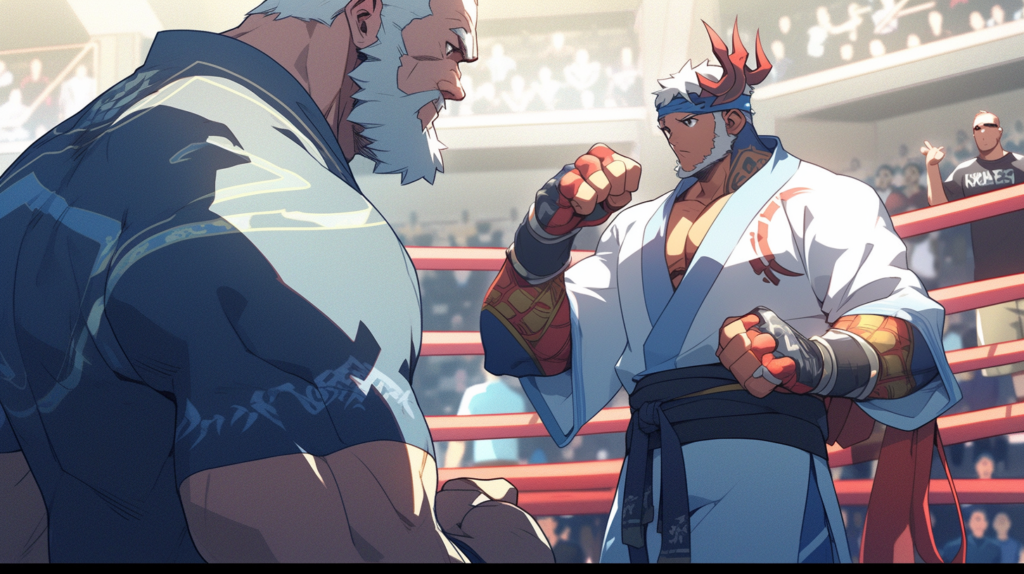
When comparing wrestling and BJJ in combat and self-defense settings, it’s important to consider their distinct advantages. We’ll explore BJJ’s expertise in control and submissions, as well as wrestling’s proficiency in taking down opponents. Additionally, we’ll examine the factors influencing fight outcomes and BJJ’s emphasis on technique and safety. Lastly, we’ll delve into BJJ’s effectiveness for real-world self-defense scenarios. With this analysis, we’ll gain valuable insights into the unique strengths of both disciplines.
BJJ’s advantage in control and submissions
BJJ has a distinct edge when it comes to control and submissions. It focuses on technical know-how and leverage, which allows practitioners to gain and hold sway over their adversaries. This control is indispensable for performing various submission moves, such as chokes and joint locks.
The emphasis BJJ puts on positional dominance helps practitioners to level the playing field between them and their opponents, despite size and strength discrepancies. This boosts their capacity to take command and secure submissions.
In addition to control, BJJ puts a key emphasis on submissions. These are techniques that require an opponent to submit defeat by applying joint locks or chokes. BJJers learn a wide array of submissions from various stances, allowing them to bring fights to a close without depending solely on strikes or overpowering their adversaries. By mastering submission techniques, BJJ practitioners can quickly disable an opponent while lessening the risk of injury.
Plus, BJJ’s advantage in control and submissions is a big factor in its effectiveness in grappling sports events and real-world self-defense scenarios. For example, in competitions like BJJ tournaments or MMA fights, BJJers are experts in controlling their opponents on the ground and securing submissions for victory. Likewise, in self-defense cases where close-quarters combat is likely, being able to take control of an assailant can make all the difference for personal safety.
By blending technical know-how with effective control and submission techniques, BJJ offers a unique edge that sets it apart from other martial arts disciplines. Its systematic approach emphasizes technique over raw power, making it an invaluable skill set for people looking for self-defense skills or success in competitive grappling sports events like BJJ tournaments or MMA fights.
Wrestling’s takedowns are so potent, it’s like gravity has a personal grudge against its opponents.
Wrestling’s ability to take down opponents
Wrestling has a fine knack for bringing down adversaries in combat. It focuses on takedowns and pins, using techniques and movements for quickly getting an opponent to the ground. Wrestlers use strength, agility and leverage to put in powerful takedowns that disable their rivals.
In stand-up situations, or when control is essential, wrestling’s takedowns offer a decisive advantage. Through double-leg and single-leg takedowns, wrestlers can shut down their adversary’s offense and gain control that can lead to pins or further attacks.
The intensity of wrestling training, conditioning and physical strength all enable the execution of takedowns. Explosive movements and grappling techniques build up the stamina and power needed to overcome opposition. This mixture of technique, conditioning and physicality allows wrestlers to take down with both precision and force.
To sum up, wrestling’s takedown ability is from its focus on efficient techniques, explosive movements, and conditioning and strength. Wrestlers are experts in takedowns that neutralize the offense and give them control. This skill is beneficial in combat where fast, decisive actions determine the victor. And, of course, who brought the better snacks.
Factors affecting the outcome of a fight
Factors Influencing the Outcome of a Fight:
In combat sports such as Brazilian Jiu-Jitsu (BJJ) and wrestling, several things can sway the outcome of a fight. Realizing these factors is essential for competitors to strategize properly and gain an edge over their challengers.
- Technique and Skill: The technical expertise and skill of a fighter has a major effect on the result of a fight. In both BJJ and wrestling, those with superior technique have a better chance of winning. Knowing various moves, submissions, and takedowns is necessary to outsmart foes.
- Physical Attributes: Strength, speed, agility, and flexibility play a big role in the outcome of a fight. Those with remarkable physical qualities often have the upper hand over their opponents. Strength helps execute strong moves, while speed and agility let fighters do fast reactions and evasive maneuvers.
- Mental Preparedness: Mental strength and preparedness can greatly impact the result of a fight. Keeping concentration, confidence, and composure during intense fighting situations gives fighters an edge over those who are easily overwhelmed or prone to errors under duress.
Although these three points capture significant factors affecting the outcome of a fight in combat sports like BJJ and wrestling, there are other important elements to consider.
Recognizing how strategy, adaptability, experience, conditioning levels, and even external factors such as fan support or environmental conditions affect results can provide beneficial insights into gaining victory in combat sports competitions. By studying these diverse factors thoroughly, fighters can raise their chances of success in both BJJ tournaments and wrestling matches.
BJJ values technique and safety – meaning even the meekest can overpower the mightiest – like David defeating Goliath, but with way more grappling and fewer slingshots.
BJJ’s emphasis on technique and safety
BJJ, or Brazilian Jiu-Jitsu, is a martial art focused on technical precision and safety. Practitioners strive to master techniques to control opponents and execute submissions. They are aware of their movements and make calculated decisions to avoid injury.
Fall protection is a priority in BJJ. Special techniques are taught to reduce the impact of being taken down or thrown. Respect for training partners is also emphasized. BJJ promotes an atmosphere of care and trust.
Progressive learning is essential to BJJ. Students must build a solid foundation before advancing to more complex techniques. Leveraging technique over strength or athleticism is key. Smaller individuals can use leverage and positioning to neutralize larger opponents.
Safety is also important in self-defense. Practitioners are taught to minimize harm both for themselves and potential assailants. Listening to the instructor’s guidance regarding technique execution and body mechanics is essential for progress and safety. Patience and consistency will help develop solid foundations and improve overall ability.
BJJ’s effectiveness for self-defense and real-world situations
BJJ’s successes in grappling sports events prove its effectiveness for self-defense and real-world situations. Practitioners have shown their ability to use techniques and strategies learned during training. The discipline’s technical aspects, combined with control and self-defense techniques, make it ideal for those looking to develop practical skills.
BJJ’s effectiveness also comes from its ability to neutralize attackers without causing too much harm. While other martial arts prioritize striking or forceful takedowns, BJJ seeks to subdue opponents without unnecessary injury. This follows the principles of self-defense, which prioritize protection without causing harm.
Keep in mind, one paragraph cannot capture the full extent of BJJ’s effectiveness. Skill level, situational context, and personal attributes can affect applicability. Nevertheless, Brazilian Jiu-Jitsu equips individuals with tools to navigate self-defense scenarios with minimal risk, using leverage and submission holds.
Considerations for Choosing Between Wrestling and BJJ
Considerations for Choosing Between Wrestling and BJJ: Personal preference, fitness levels, career prospects, mastery, and the connection to MMA success are factors that play a crucial role in deciding between these two disciplines. So, whether you’re drawn to the intensity and directness of wrestling or the technical finesse of BJJ, understanding these considerations will help you make an informed decision on which path to pursue.
Personal preference and goals
When considering personal goals, the decision between wrestling and BJJ depends on various factors. Wrestling is fast-paced and physically demanding, focusing on takedowns and pins. It prepares athletes for wrestling competitions and other combat sports such as MMA and cage fighting. BJJ is known for its technical aspects and leveraging. It teaches practitioners to utilize an opponent’s size and strength against them. This makes it effective for self-defense and grappling sports.
Wrestling and BJJ have complementary aspects. BJJ practitioners can learn takedowns and condition themselves to improve performance. Additionally, they can learn to transition from the guard position to a top position.
Fitness levels and physical demands differ between wrestling and BJJ. Wrestling is explosive, while BJJ requires endurance. Career prospects should be taken into account, and time needed to master each discipline should be considered. BJJ techniques and submissions may take longer to learn than wrestling’s focus on takedowns and pins.
For those interested in MMA, training in both wrestling and BJJ is beneficial. The combination of takedowns from wrestling and the ground fighting expertise of BJJ provides a well-rounded skill set.
Fitness and physical demands
Fitness and physical demands are integral for success in both BJJ and Wrestling. Regular training sessions involve intense drills, sparring, and grappling movements that test overall fitness. BJJ focuses on core strength, flexibility, agility, and balance, while Wrestling requires explosive bursts of energy. Mental resilience is also key for enduring physically demanding training. Plus, practitioners must learn to execute BJJ techniques with precision. To be successful, competitors must prioritize their fitness levels. Thus, specialized training regimens have been created for each martial art form. So, if you’re deciding between wrestling and BJJ, consider your career prospects and opportunities!
Career prospects and opportunities
It is essential to recognize the growing popularity of Wrestling and BJJ in various professional fields. Wrestlers frequently move to occupations as coaches or instructors, due to their knowledge of grappling techniques and training methods (Reference Data: Complementary Aspects of Wrestling and BJJ). The success of wrestlers in MMA has opened up the possibility for them to compete in lucrative organizations, such as the UFC (Ultimate Fighting Championship) (Reference Data: Benefits and Strengths of Wrestling).
Pursuing a career in BJJ presents many possibilities, such as becoming an instructor or launching one’s own training academy. The technical expertise obtained from practicing BJJ can result in a successful career as a grappling coach or consultant for other martial artists or MMA fighters. Furthermore, BJJ practitioners have achieved victory in high-level events such as Abu Dhabi Combat Club (ADCC) Championships or transitioning into professional MMA careers, where their skill on the ground gives them a strategic advantage (Reference Data: Advantages and Skills of Brazilian Jiu-Jitsu).
Mastery and time required to learn
Wrestling and Brazilian Jiu-Jitsu (BJJ) require a lot of time and commitment to master. Gaining knowledge and developing skills comes with consistent practice and training.
- Time Investment: Mastering either of the two takes a lot of time. Complex techniques and strategies demand time to understand and perform.
- Progression in Belt Systems: BJJ has a belt system that shows proficiency. Going from white belt to black belt takes years of practice and skill improvement. Wrestling doesn’t have a belt system but is judged on individual performance in competitions.
- Tactical Awareness: Understanding the tactics of wrestling or BJJ is important. Wrestlers need to learn takedowns, pins, and escapes. BJJ practitioners must learn ground fighting techniques, submissions, and positional control.
- Live Sparring Experience: To really master either of the two, individuals require practical experience through live sparring sessions. This helps test techniques, build resilience, and improve overall performance.
Mastery of these martial arts is ongoing. Learning, coaching, competing, and exposure to different styles help further development.
Pro Tip: Consistency is essential. Regular training and focused practice boosts progress. Patience and persistence pay off in the end. Combining wrestling and BJJ skills makes MMA success easier.
Importance of training in both arts for MMA success
Training in both wrestling and Brazilian Jiu-Jitsu (BJJ) is key for success in MMA. Combining the techniques of each art boosts overall performance. Wrestling emphasizes intensity, explosiveness, and conditioning for takedowns and pins. BJJ focuses on technical aspects, leverage, and ground fighting for submissions.
Wrestling gives an edge for standing moves and takedowns. It also develops stamina and physical strength. This strength is useful for clinchwork and ground-and-pound. BJJ offers its own advantages, like ground control. Also, its self-defense techniques prepare fighters for real-world scenarios.
Wrestling and BJJ can complement each other in MMA training. Wrestlers can learn from BJJ regarding submissions and control. BJJ practitioners can add takedowns to their arsenal from wrestling. Transitions from guard position to top position offer tactical advantages.
The choice between wrestling and BJJ depends on personal goals, physical demands, career prospects, and the time to master each. Those who train in both arts gain an advantage by using the strengths of each discipline. This helps athletes strive for success in the multifaceted world of MMA.
Conclusion
In the conclusion, we will recognize the strengths present in both wrestling and BJJ, emphasizing the importance of individual goals and circumstances. We will explore the value in understanding and appreciating diverse martial arts disciplines.
Acknowledgment of strengths in both arts
Both Brazilian Jiu-Jitsu (BJJ) and Wrestling have strengths. It’s important to recognize them.
BJJ focuses on technical aspects and leverage. This can help when facing larger opponents. Wrestling emphasizes intensity, explosiveness and conditioning. This builds stamina and strength.
BJJ excels in ground fighting and submissions. It also emphasizes control for precise movements. Wrestlers have an edge in standing moves and takedowns. Their expertise in executing takedowns and pins can lead to dominant positions.
Both arts have their advantages. BJJ practitioners can learn from wrestling techniques. Combining them has benefits in MMA competitions.
Importance of individual goals and circumstances
Individual goals and circumstances are key when choosing a martial arts path. Whether it’s Brazilian Jiu-Jitsu (BJJ) or wrestling, understanding one’s objectives and situational factors is crucial.
In BJJ, technical aspects and leverage are important. Practitioners prioritize ground fighting and submissions, allowing them to neutralize size and strength differences. Control and self-defense techniques are emphasized, making it an ideal choice for those seeking practical combat skills.
Wrestling focuses on intensity, explosiveness, and conditioning. Wrestlers specialize in takedowns and pins, showing their standing move advantage. This builds stamina and physical strength, aiding success in MMA competitions.
Personal preference and goals decide the path. Some may prefer BJJ’s technical aspects, while others may be drawn to wrestling’s intense nature. Fitness levels also matter, as both arts require different physical demands.
Career prospects should also be considered. Combining BJJ and wrestling skills is effective for MMA competitions. Mastery of either art takes time, so individuals need to consider how much dedication they are willing to give.
Value in understanding and appreciating diverse martial arts disciplines
Gaining knowledge and skills in various martial arts techniques, strategies, and philosophies has great value. Two of these disciplines are Brazilian Jiu-Jitsu (BJJ) and wrestling. BJJ focuses on grappling and ground fighting with an emphasis on submissions. Wrestling emphasizes takedowns and pins.
Exploring both of these disciplines can help individuals gain a comprehensive understanding of different fighting styles. BJJ has technical aspects such as leverage, control, and self-defense techniques. Wrestling is known for its intensity, explosiveness, and conditioning. It builds stamina and physical strength.
The complementary aspects of both wrestling and BJJ can be beneficial. BJJ practitioners can learn takedowns and conditioning from wrestling. And wrestlers can transition from guard to top position with BJJ techniques. Combining these two disciplines is especially helpful in mixed martial arts (MMA).
When comparing BJJ and wrestling in combat and self-defense, certain factors come into play. BJJ focuses on control and submission holds, while wrestling is expert in taking down opponents quickly. The outcome of a fight often depends on several factors. BJJ’s focus on technique and safety makes it suitable for self-defense.
The choice between BJJ and wrestling depends on personal preference, goals, fitness levels, career prospects, and time invested. Appreciating diverse martial arts disciplines encourages individuals to consider training in both for success in MMA or their chosen path. Embracing the unique aspects of each martial art can help develop a well-rounded skill set.
Some Facts About “Is Wrestling Better Than BJJ”:
- ✅ BJJ and wrestling are both effective martial arts with their own strengths and techniques. (Source: Team Research, Gracie Castle Hill, Reddit)
- ✅ Wrestling emphasizes takedowns and pins, while BJJ focuses on submissions and ground fighting. (Source: Team Research, Gracie Castle Hill, Sweet Science of Fighting, Way of Martial Arts)
- ✅ BJJ techniques are more complex and multi-step, while wrestling is more dynamic and physically demanding. (Source: Team Research, Gracie Castle Hill)
- ✅ BJJ is considered more effective for self-defense due to its extensive techniques, while wrestling has its advantages in terms of explosive takedowns and strength. (Source: Team Research, Gracie Castle Hill, Fighting Advice)
- ✅ Both BJJ and wrestling play important roles in mixed martial arts (MMA), and many fighters train in both arts to be well-rounded. (Source: Team Research, Gracie Castle Hill, Sweet Science of Fighting)
FAQs about Is Wrestling Better Than Bjj
Is Wrestling Better Than BJJ?
Is Wrestling Better Than BJJ? When comparing wrestling and Brazilian Jiu-Jitsu (BJJ), it’s important to consider the context, goals, and individual preferences. Both martial arts have their own strengths and can be effective in different situations.
What Are The Fundamental Differences Between Wrestling And BJJ?
The fundamental differences lie in their objectives and techniques. Wrestling focuses on takedowns and pins, while BJJ emphasizes ground fighting and submissions. Wrestling is more explosive and physically demanding, while BJJ techniques are complex and multi-step.
Which Martial Art Is Better For Real-Life Situations?
BJJ is often considered more advantageous for real-life situations due to its focus on control and submissions, which can neutralize size and strength differences. However, wrestling’s ability to take someone down from a standing position can also be useful in self-defense scenarios.
Can BJJ Fighters Learn From Wrestling?
Absolutely! BJJ practitioners can benefit from learning wrestling techniques, such as takedowns and scrambles, to improve their overall grappling skills. Conditioning and athleticism, hallmarks of wrestling, can also be valuable for BJJ practitioners.
What Are The Career Prospects For Wrestlers And BJJ Practitioners?
Wrestling career prospects often depend on the region and availability of opportunities. BJJ, on the other hand, offers more opportunities for competing and teaching. BJJ has a wider reach and is practiced globally, making it a popular martial art for both recreational and professional events.
Is It Necessary To Train In Both Wrestling And BJJ For Success In MMA?
Training in both wrestling and BJJ is highly beneficial for success in mixed martial arts (MMA). Wrestling provides excellent takedowns and ground control, while BJJ offers essential ground fighting skills and submissions. Many successful MMA fighters have backgrounds in both martial arts.
